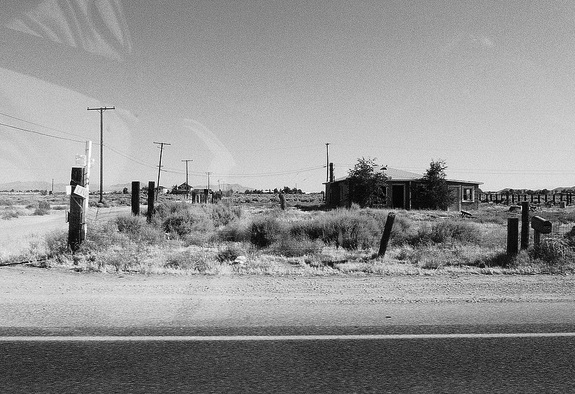The Town Featured in ‘Erin Brockovich’ Still Has a Bunch of Pollution in Its Water
The chromium pollution is spreading, and Hinkley’s residents are at a loss for what to do

Abandoned building in Hinkley, CA. Photo: Victor Solanoy
A cute single mom takes on a polluting, dishonest energy company and wins justice for the town’s ailing residents. This catchy, based-on-a-true-story plot earned the film Erin Brockovich a Best Picture nomination at the Academy Awards and massive box office success in 2000. Unfortunately, however, the feel-good, stick-it-to-the-man optimism that makes Erin Brockovich so appealing turns out to be largely a work of fiction.
In real life, Hinkley, California, is not doing so hot. The chromium pollution is spreading, and the residents are at a loss for what to do. PBS Newshour sent reporter Miles O’Brien to Hinkley to get the locals’ take. One of them, Roberta Walker, told O’Brien:
“The only true thing about the movie is that poisoned us. We didn’t bring a giant to their knees obviously; we just woke them up — woke up the dragon.”
Chromium-6 pollution is spreading to formerly unpolluted wells around the city. And it doesn’t stop with Hinkley.
A few years ago, The Environmental Working Group did a study of U.S. tap water, and it found a chrome-plated, potentially carcinogenic mess. They tested tap water samples from 35 cities and found chromium-6 in 31 of them.
The highest concentration EWG discovered, came from Norman, Oklahoma. But at nearly 13 parts per billion, the water there is still considered safe according to the 22-year-old EPA standard (100 ppb). It is, however, more than 600 times greater than the public health goal established by the California Environmental Protection Agency in the wake of the Hinkley well poisoning scandal.
In other words, Erin Brokovich’s compelling story left little lasting impact on chromium-6 regulation around the nation. The Center for Public Integrity explains the gravity of the problem:
In 2008, the National Toxicology Program, part of the National Institutes of Health, published groundbreaking research detailing how mice and rats that drank heavy doses of a toxic form of chromium called chromium (VI) developed cancerous tumors. The findings prompted the Environmental Protection Agency to act.
EPA scientists evaluated hundreds of studies and concluded that chromium (VI) likely causes cancer in people who drink it. The agency in 2011 was on the verge of making its scientists’ findings official — a first step toward forming more stringent clean-water rules. But last year it bowed to pressure and announced it was going to wait for new studies being paid for by the chemical industry.
Though the science is in on the danger of chromium-6, CPI and CBS point out that regulators are still bogged down in weighing public health concerns with the economic realities of tougher water standards, not to mention navigate through the clout of powerful companies such as the one poisoning wells in Hinkley.
More from Smithsonian.com:
/https://tf-cmsv2-smithsonianmag-media.s3.amazonaws.com/accounts/headshot/Rachel-Nuwer-240.jpg)
/https://tf-cmsv2-smithsonianmag-media.s3.amazonaws.com/accounts/headshot/Rachel-Nuwer-240.jpg)